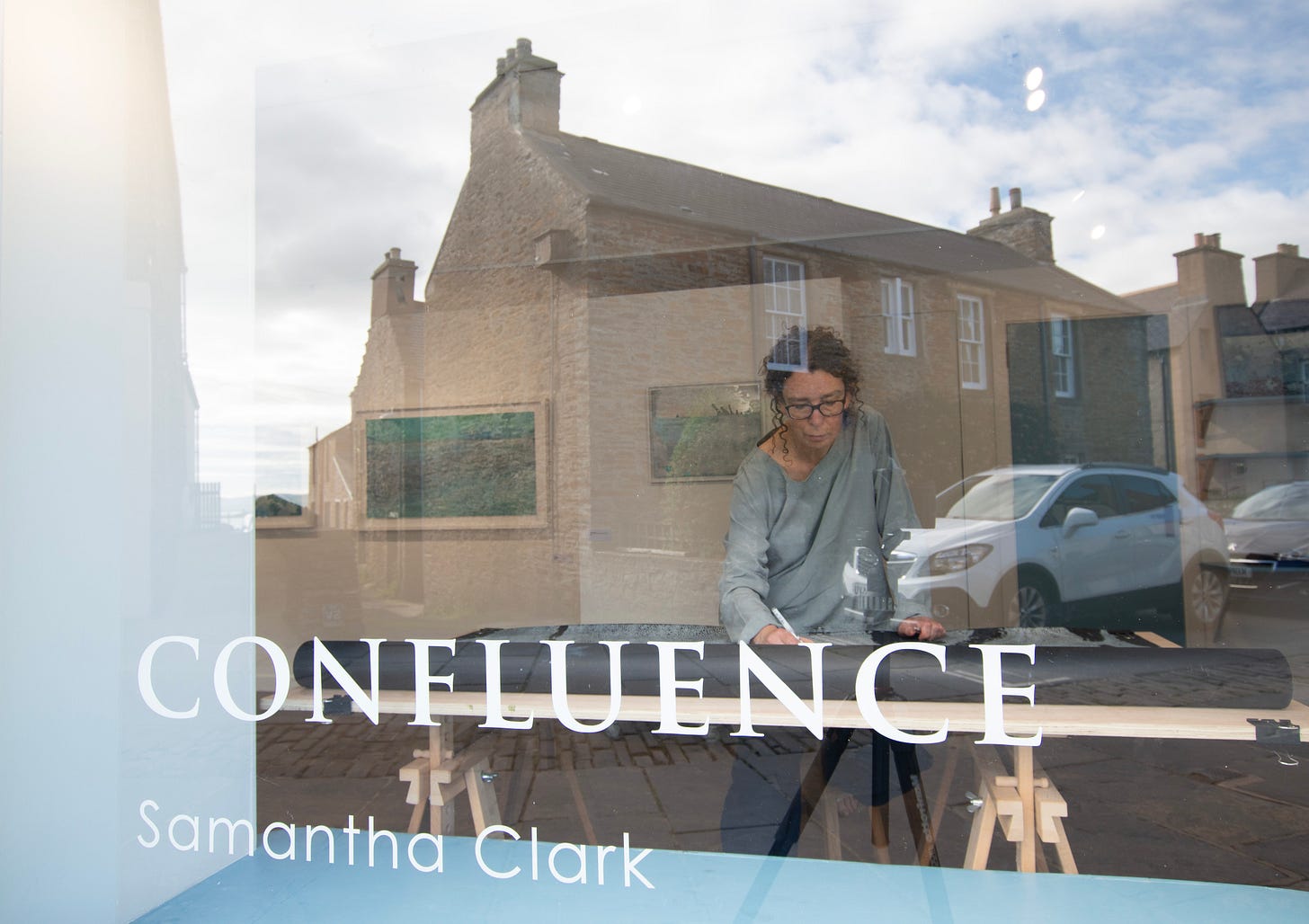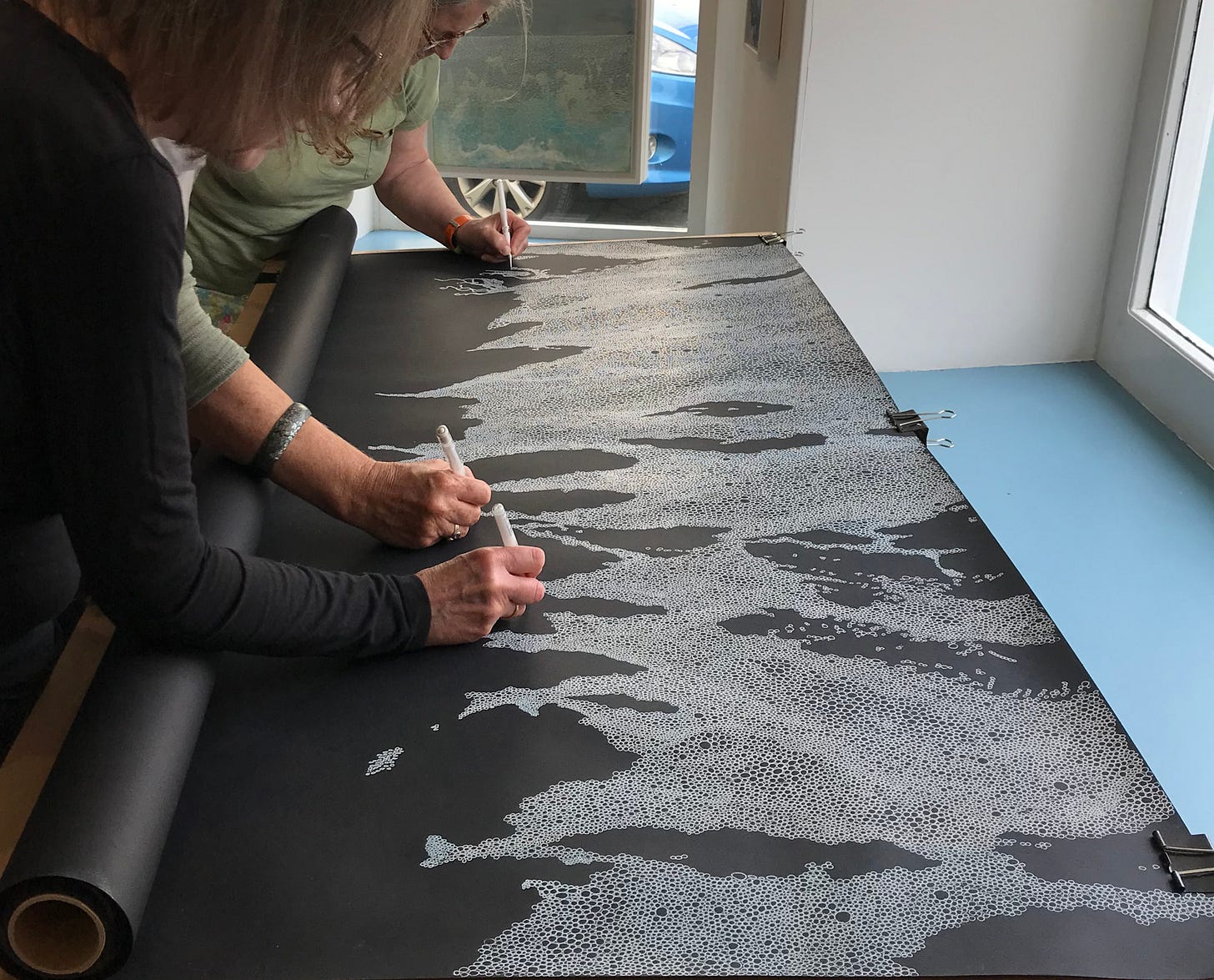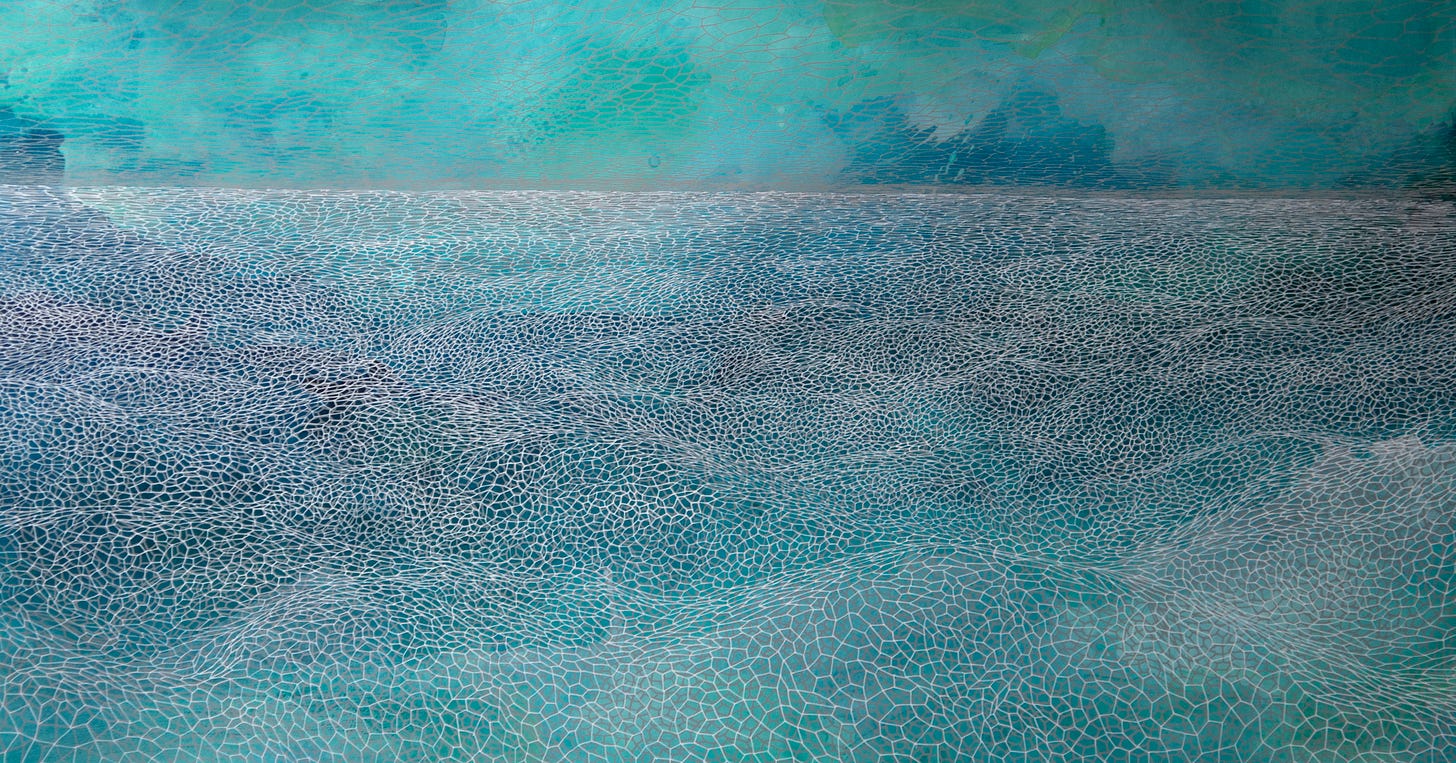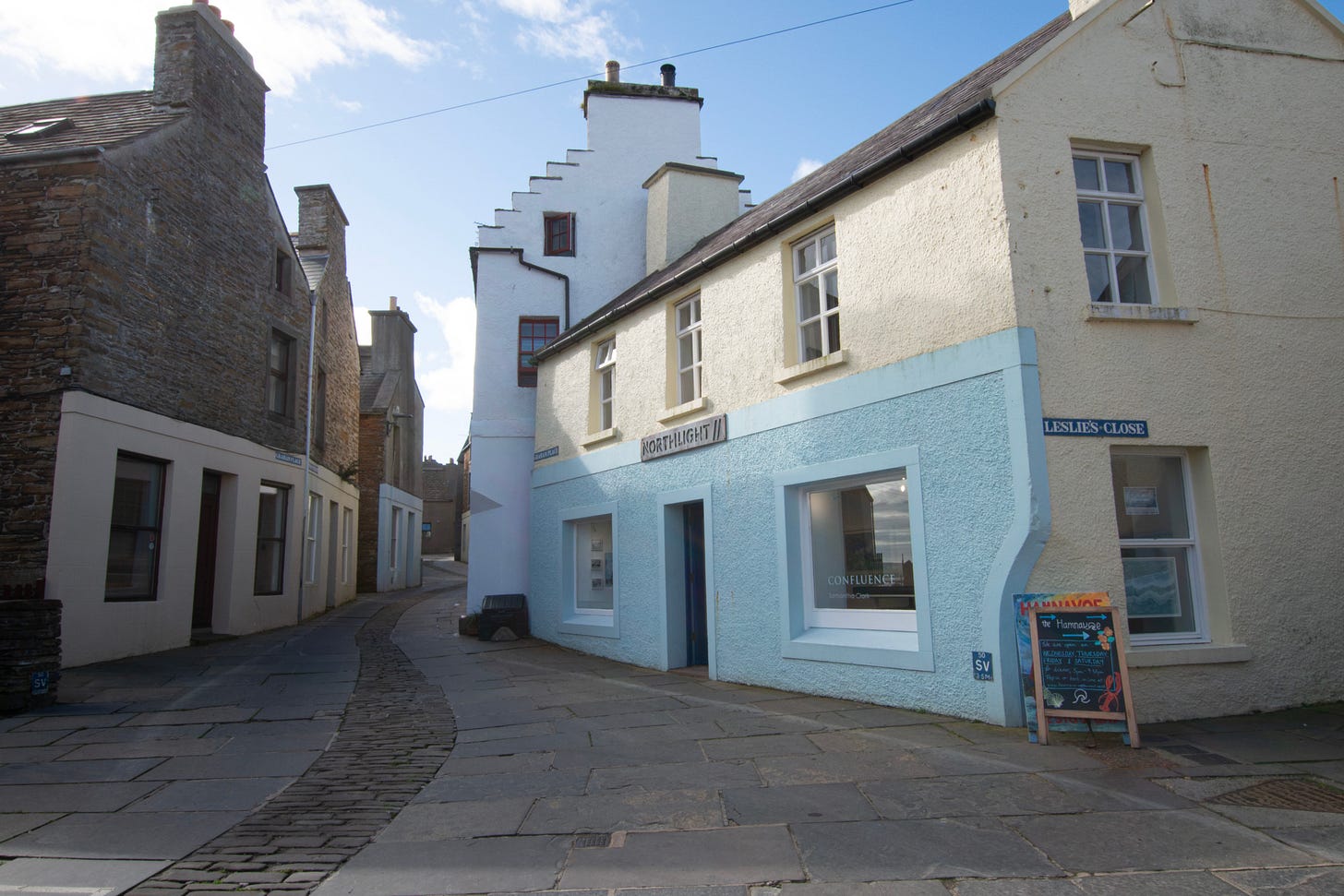After a flurry of activity my exhibition is now up and running at the lovely Northlight Gallery in Stromness. Thanks to everyone who came along on Saturday to the preview, and for those who have joined me since, and added a few drops to the big drawing I’m working on. Drop by drop it is creeping across the paper like a slowly incoming tide. It is already starting to flow off the edge of the desk and into the window. How far will it get? I’ll keep you posted!
Northlight gallery is right on the long street which winds North to South through Stromness, between the sea and the steep hill known as Brinkie’s Brae. The gallery is well named, as the light that floods in is indeed beautiful and always changing. I keep switching off the artificial lights to better enjoy how it plays across the surface of my pictures. Here’s ‘Sea Mist’ catching the light yesterday afternoon…
The top layers of lines here are drawn with a chrome ink pen, and I love how they flicker, changing from dark grey to bright light, creeping across the surface as the light moves.
This little picture was a very, very long time in the making. It has so many layers I lost track. Lines and bubbles and washes and lines and more lines and it still wasn’t right. Several times I nearly sanded it all back to start again. But I knew it had something, so I kept going back to it over a very long time until finally, one day, it all just seemed to click into place.
I went back through my old photos and found this earlier version of Sea Mist - from more than two years ago (I told you it took a long time!) I’d already worked over it several times. But here it’s still…meh. Everything’s fighting for attention. And that greeny blue is just…wrong…We got there in the end, but it’s been a long and winding road.
But whether its art or writing (and I suspect other creative tasks too) it’s those pieces that give you lots of trouble, the ones you need to work and work and work at, the ones you sometimes feel like giving up on and throwing away, are the very ones that teach you the most. They ask tricky questions of you. They won’t respond to your usual strategies. They make you test new ideas. They take you back to reconsider your aims. They make you feel like you’ve nothing to lose, you’ve made a total mess, so you may as well try something different. It’s horribly uncomfortable at the time. You feel clueless, adrift, making all that effort with maybe nothing to show for it.
Habitual ways of working are indispensable. They give you a starting point, a set of familiar creative tools, and a way to keep moving when, frankly, you may not be feeling very inspired. But you also have to break them sometimes, or you just get stuck in a formula. And it’s the times you struggle and have to push on through that new things can happen. It’s these ‘troublesome’ ones that teach you the most.
So before ‘Sea Mist’ goes off to its new home at the end of the show, I’ll be spending a bit of time considering what it has taught me, and what I’ll do with that once I’m back in the studio again. In fact, sitting in this space with a body of work all gathered together is a chance to gather my thoughts too, and consider next creative moves.
Time, and catching the passage of it, is something that runs through all this work. Intricacy and slow care in the making of something, the way the brief act of drawing a line or a circle holds time still, like a diary of ongoingness, gathering moments up and holding them still.
The way a simple action, repeated again and again with all the inevitable tiny imperfections of the hand-made, generates something of great complexity without need for an overarching plan, just a flexible intention, a compass bearing to move towards, is also a guiding principle.
Water, and the complexity of its presence in and around us, is also here; how it is constantly in flux and yet also ancient, how it flickers visually between transparency and reflection, surface and depth, visible and invisible.
I've had lovely conversations that sparked more thoughts. Two oceanography PhD students came in, here for the concurrent Science Festival. We spoke about how the ocean is modelled, how data is visualised, and how even this data is skewed towards the land; the closer to land the denser the data points. 71% of the earth is ocean. That we named our planet ‘Earth’ instead of ‘Ocean’ says more about us than about this world we inhabit.
For those of you who can’t make it to Orkney, here’s a walkthrough video - I hope it doesn’t give you motion sickness!
And here’s how the drawing is coming along…
Time to get back to drawing more bubbles…
Waving to you from the window of Northlight!
Sam














Thank you for these images and thoughts... I too have been thinking about habitual ways and the discomfort/potential of changing them. I really loved your walkthrough video. Wish I could come and draw some bubbles!
Your exhibition looks fab Sam. I wonder if you’ll be sad to see Sea Mist go? I would have certainly loved to have given it a home. It just goes to show that persistence pays off. Draw a few bubbles for me will you? I wonder how and where that piece will end. That too is going to be fascinating.